Our Milky Way Galaxy's Core Revealed (Photos)
The Peanut at the Heart of our Galaxy
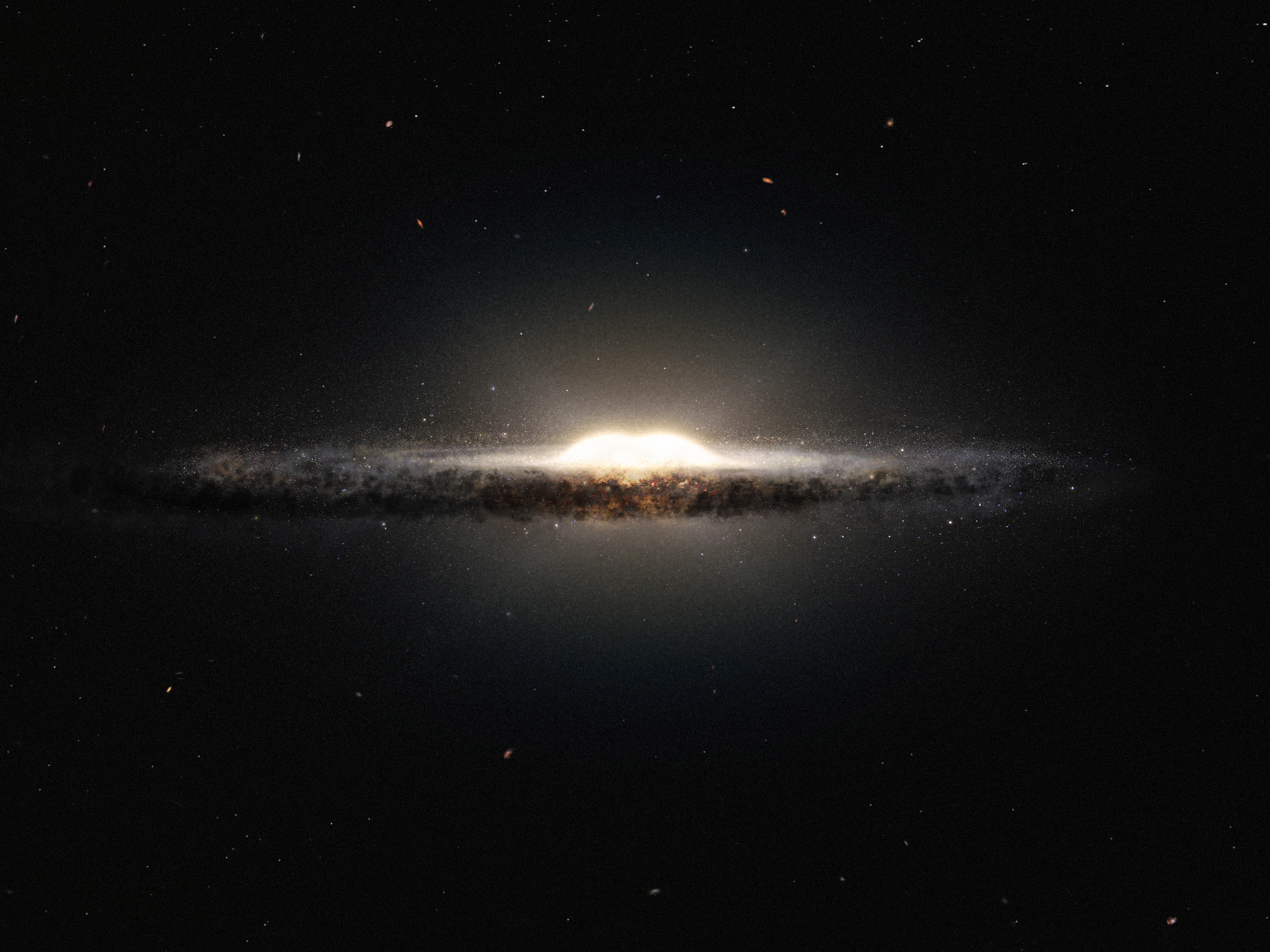
Artist's impression of the central bulge of the Milky Way.
Milky Way Bulge Over ESO Telescope
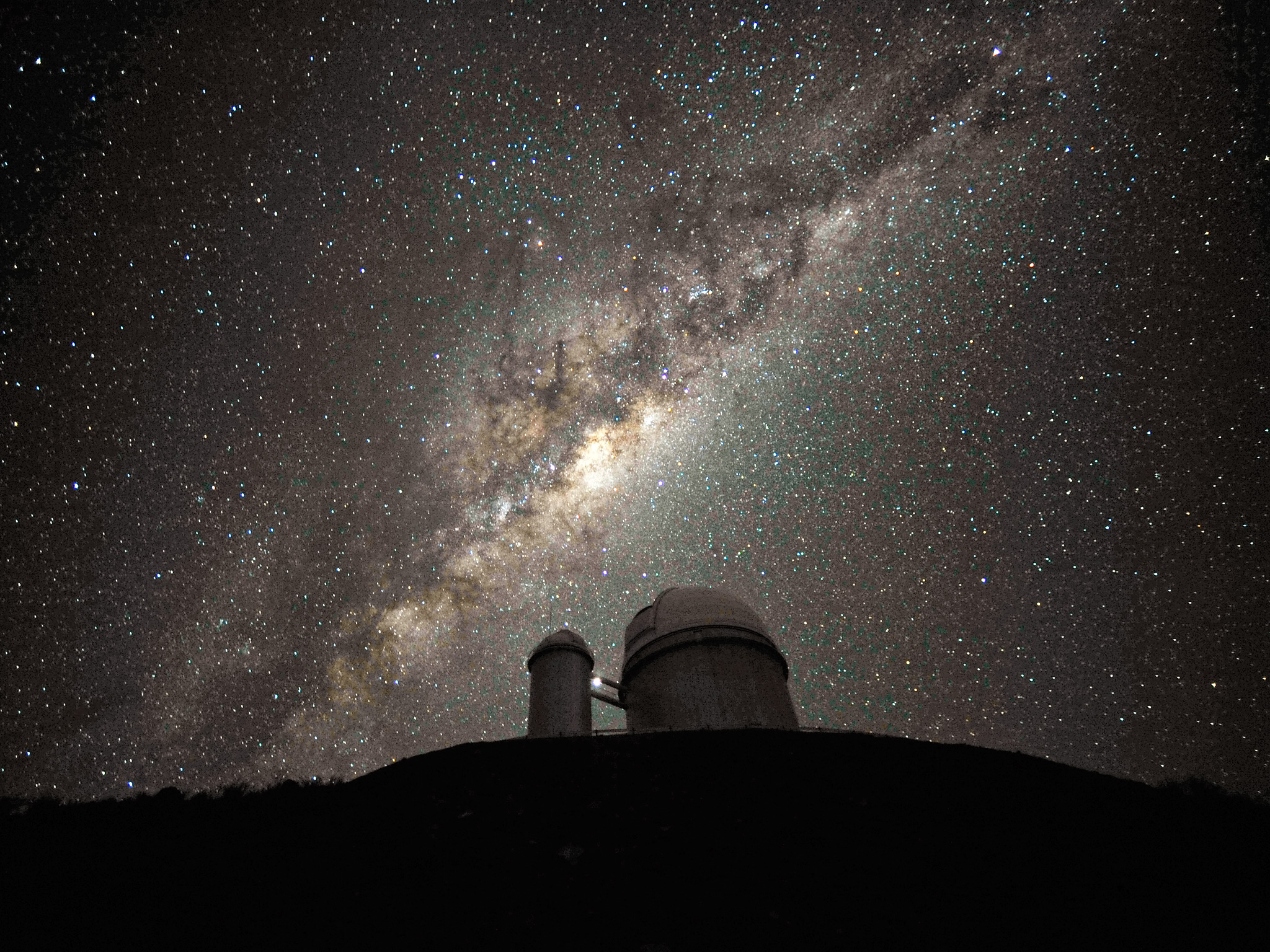
The galactic center and bulge above the ESO 3.6-metre telescope.
Hubble view of galaxy NGC 4710
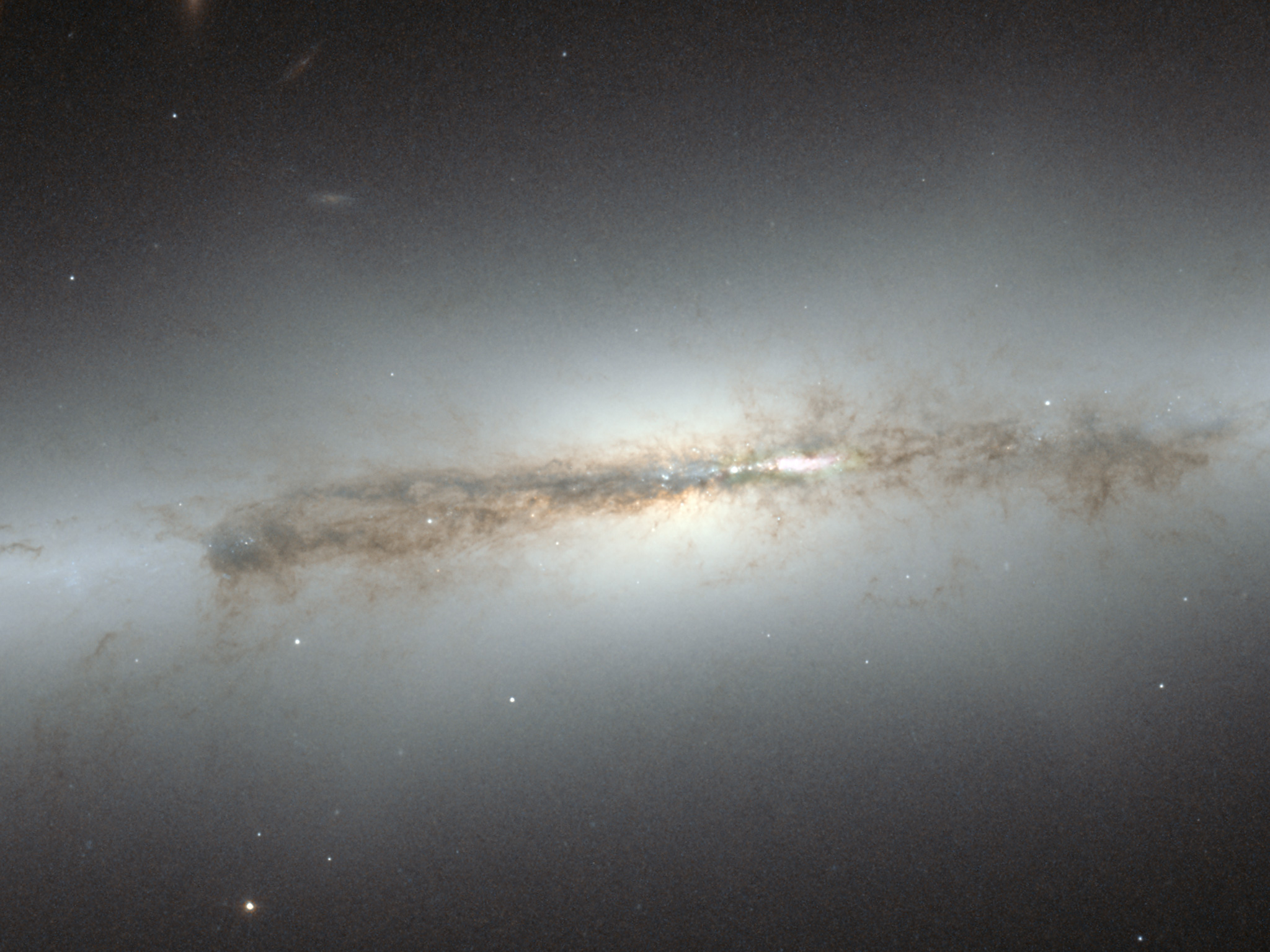
This image from the NASA/ESA Hubble Space Telescope shows edge-on galaxy NGC 4710.
Artist's impression of the Milky Way-Annotated
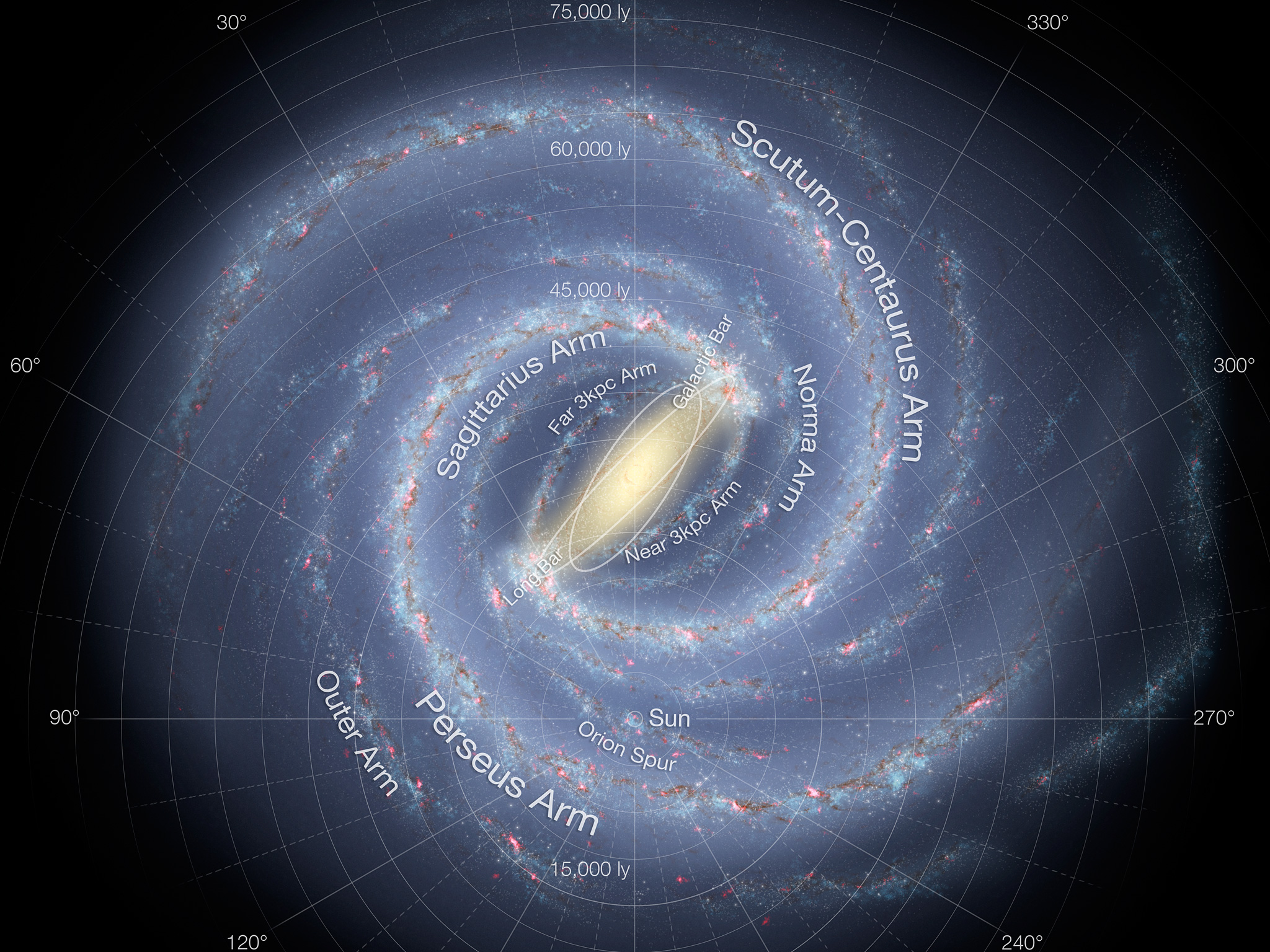
This detailed annotated artist’s impression shows the structure of the Milky Way, including the location of the spiral arms and other components such as the bulge.
Part of the VVV View of the bulge of the Milky Way
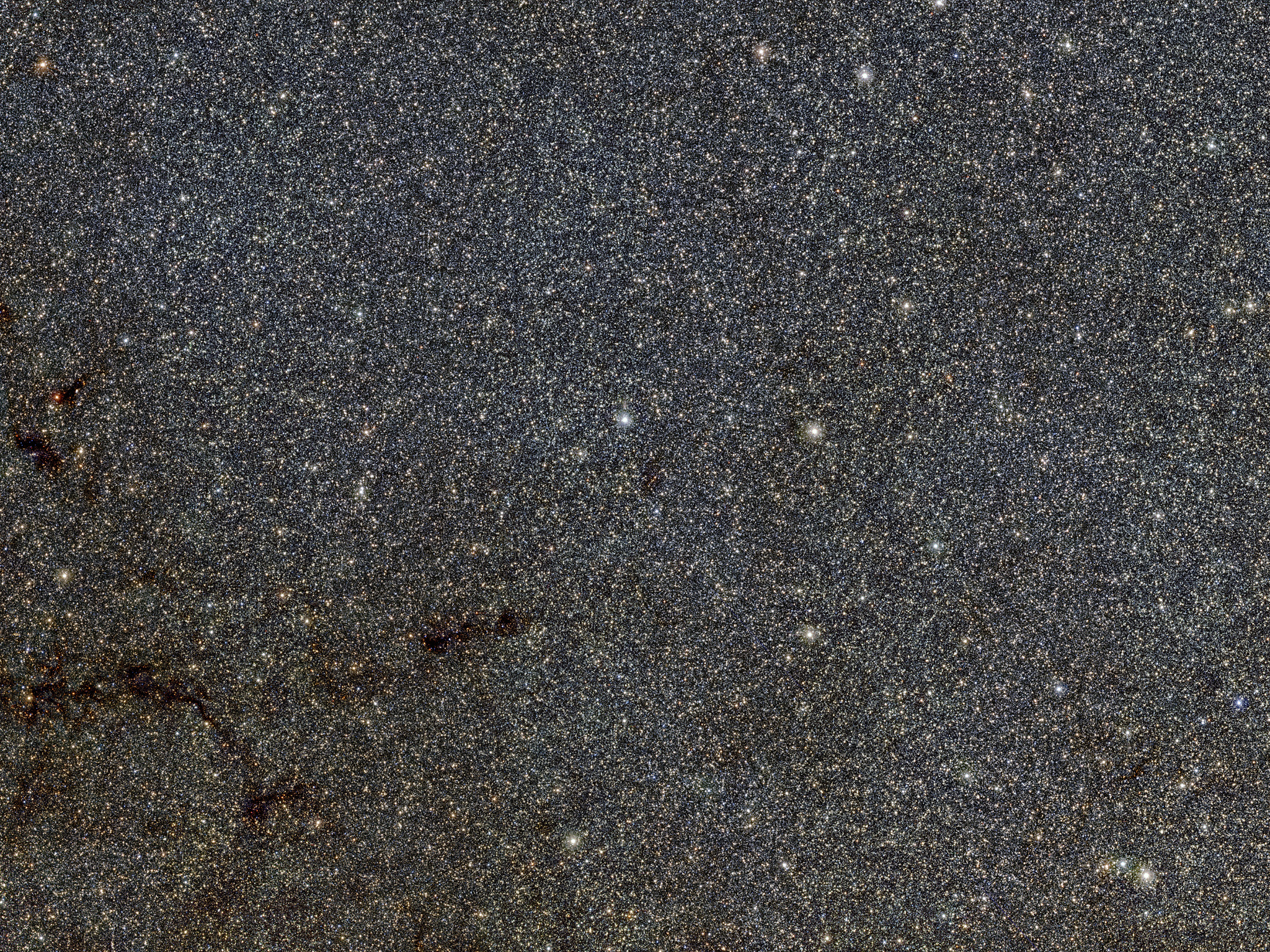
This large star-filled picture is a tiny part of the VVV survey conducted by ESO’s VISTA infrared survey telescope.
Wide View of Part of the Bulge of the Milky Way
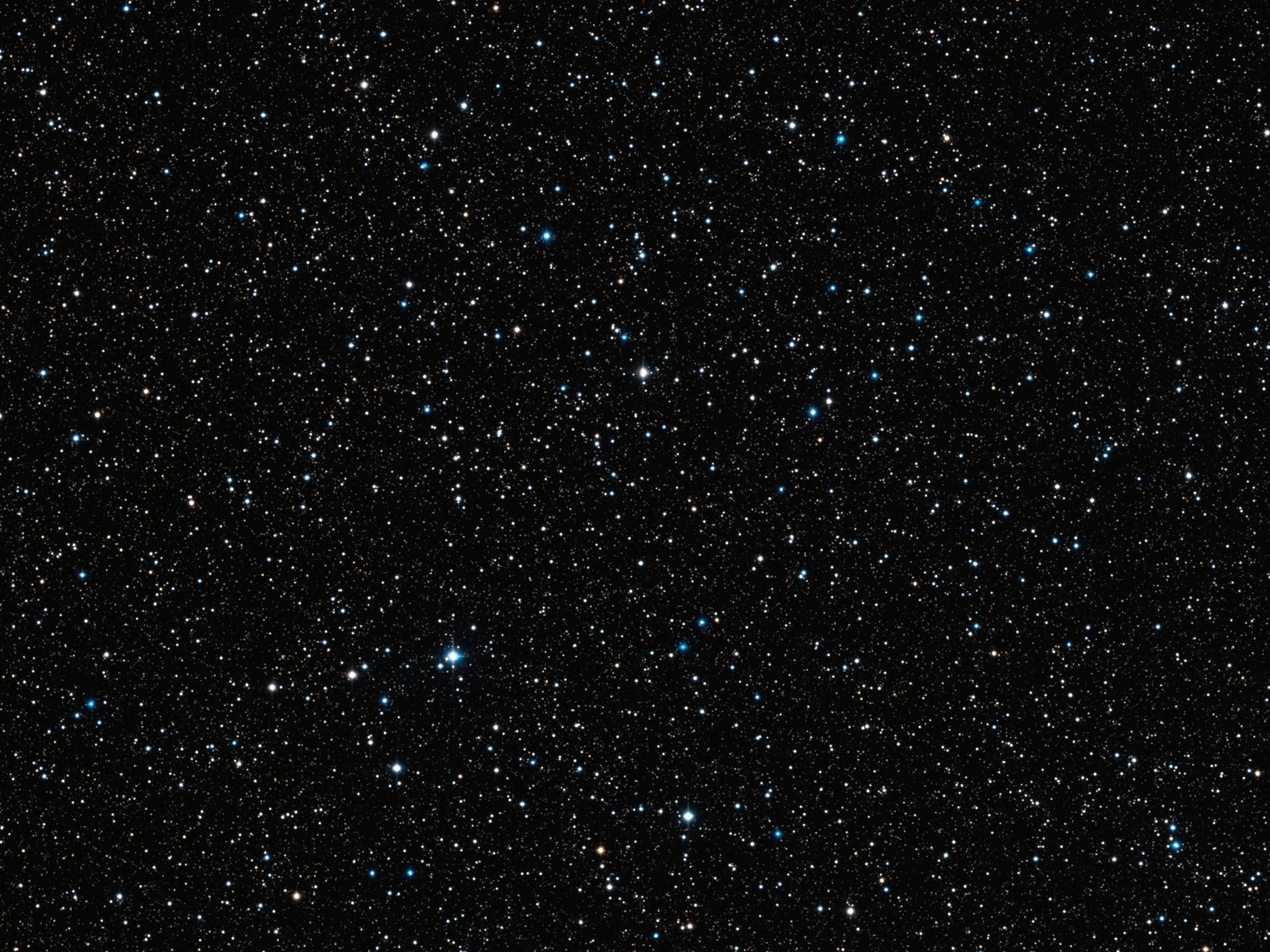
This star-filled picture was taken using the Wide Field Imager on the MPG/ESO 2.2-metre telescope at ESO’s La Silla Observatory in Chile.
Image Captures 84 Million Stars
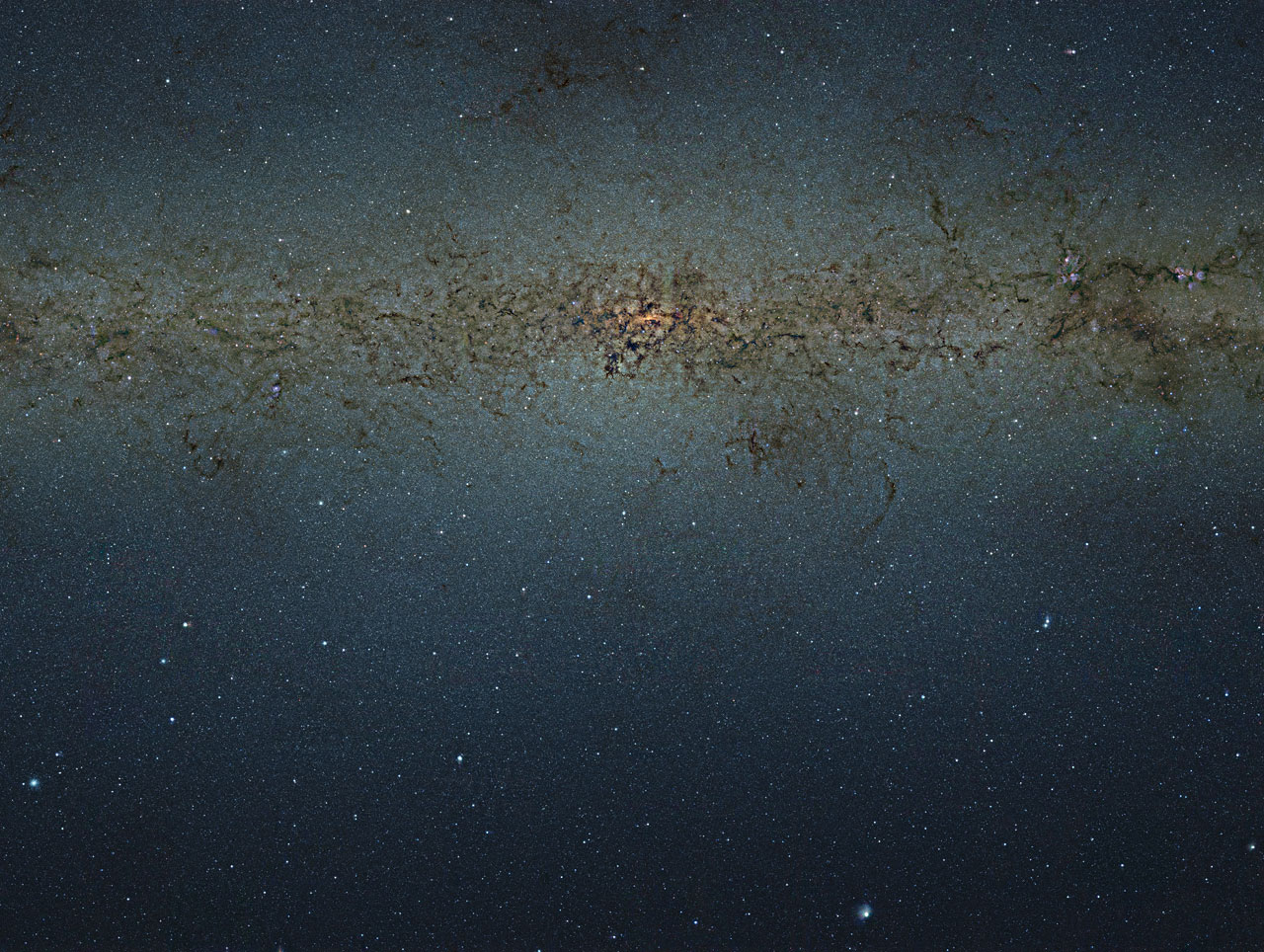
This view of the central parts of the Milky Way was obtained with the VISTA survey telescope at ESO’s Paranal Observatory in Chile. The huge picture contains nearly nine billion pixels and was created by combining thousands of individual infrared images from VISTA into a single monumental mosaic. The image is too large to be easily displayed at full resolution.
Get the Space.com Newsletter
Breaking space news, the latest updates on rocket launches, skywatching events and more!
VISTA Telescope's View of Milky Way's Center
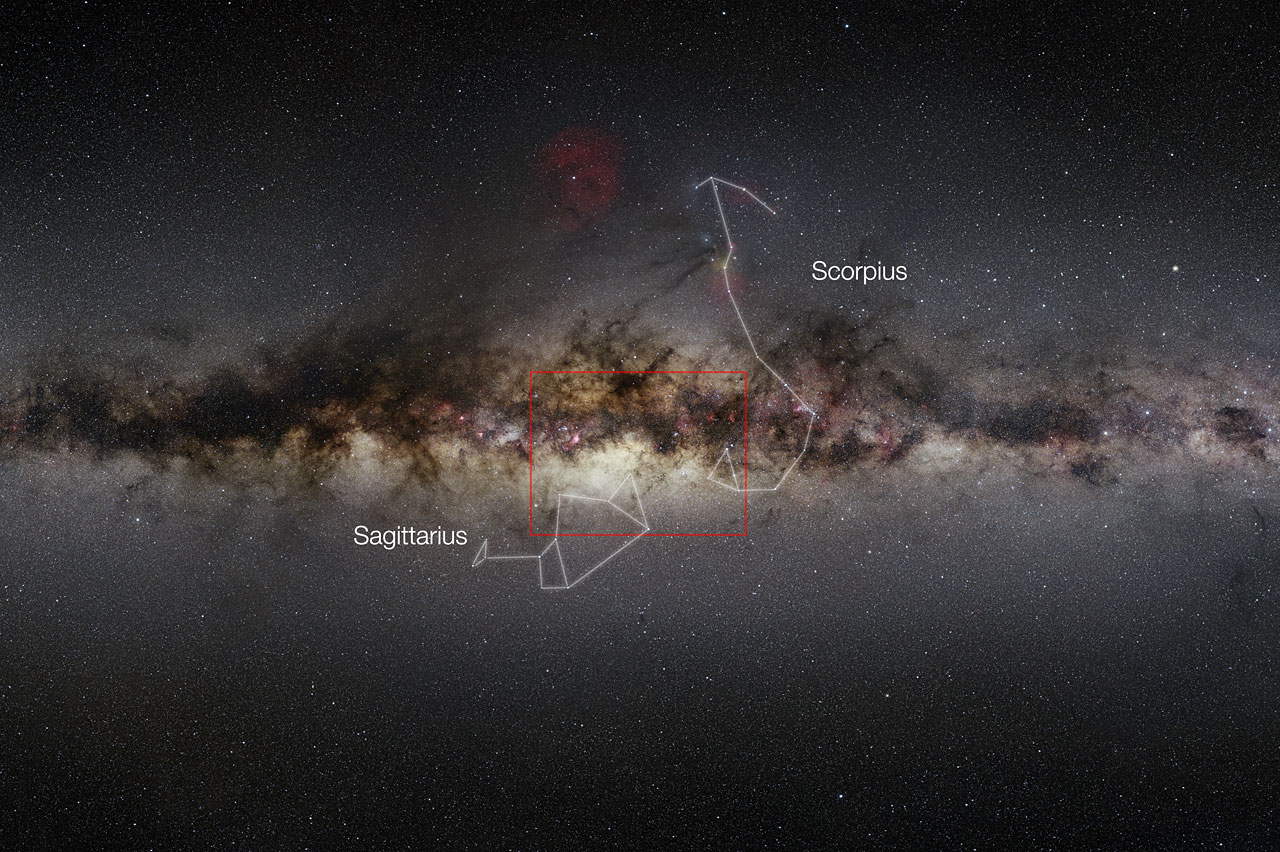
This very wide-field view of the Milky Way shows the extent of the 84-million-star VISTA infrared image of the center of the galaxy (delineated by red rectangle).
Optical/Infrared Comparison of Milky Way Center
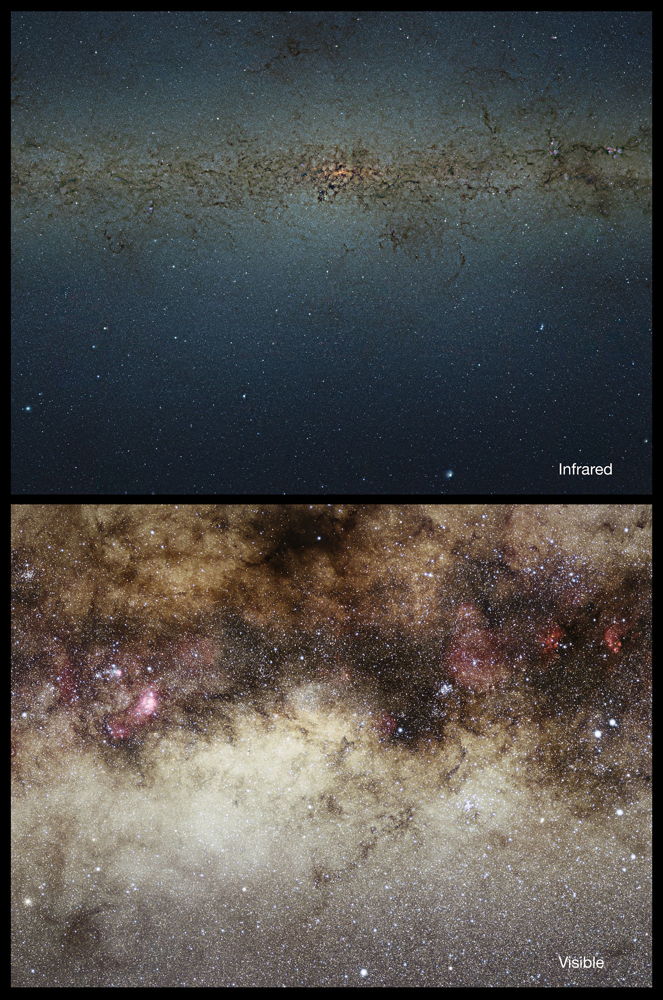
This view compares a huge mosaic in infrared light from the VISTA survey telescope and a visible-light mosaic view of the same region taken with a small telescope. Because VISTA has a camera sensitive to infrared light it can see through much of the dust blocking the view and give a very clear view of the multitude of stars in the central parts of the Milky Way.
Color–Magnitude Diagram of the Galactic Bulge
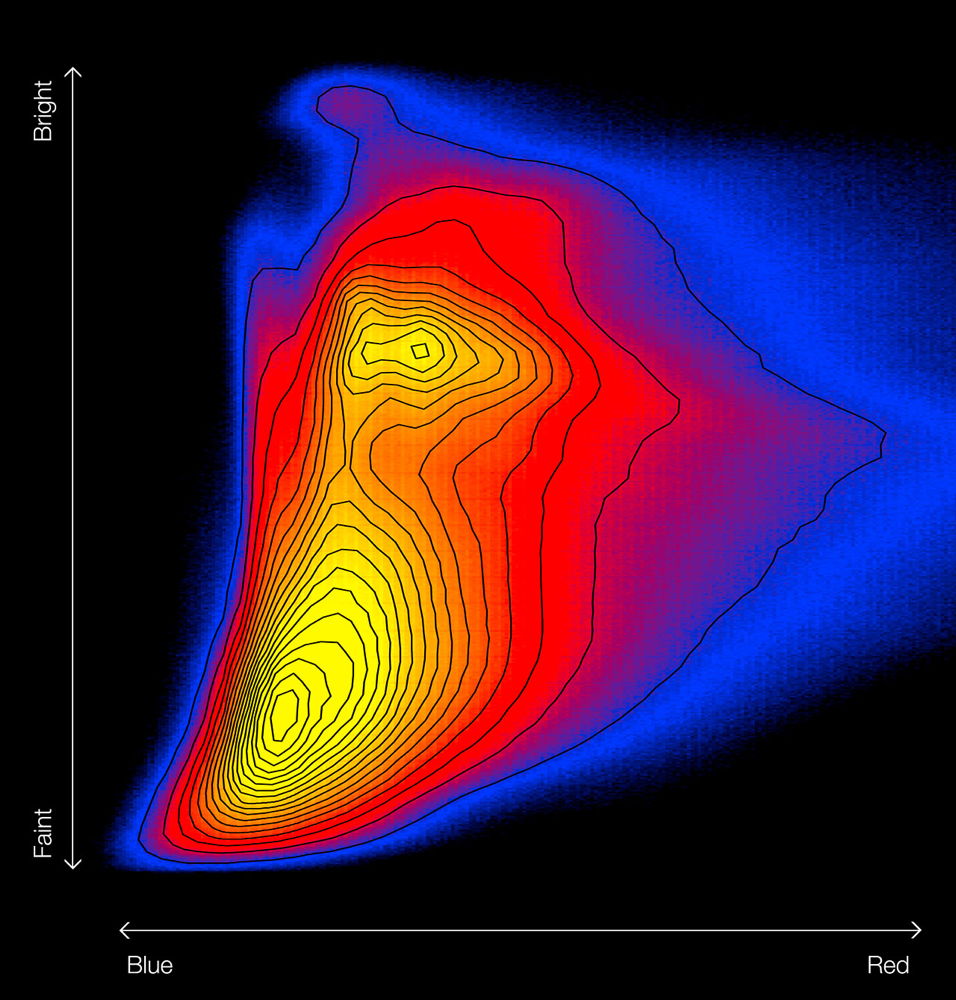
This diagram plots the brightnesses of more than 84 million stars in the central part of the Milky Way against their colours, measured from many VISTA images as part of the VVV survey. This is the first time that such a colour–magnitude diagram has been made for the entire Galactic bulge and creates the richest colour–magnitude diagram ever assembled. Brighter stars appear towards the top, fainter towards the bottom and redder stars to the right and bluer ones to the left. Most stars lie in the yellow regions, with fewer in the bluer parts of the diagram. More evolved red giant stars appear at the upper-right and fainter dwarfs at the bottom.
Annotated Map of VISTA’s View of the Center of the Milky Way
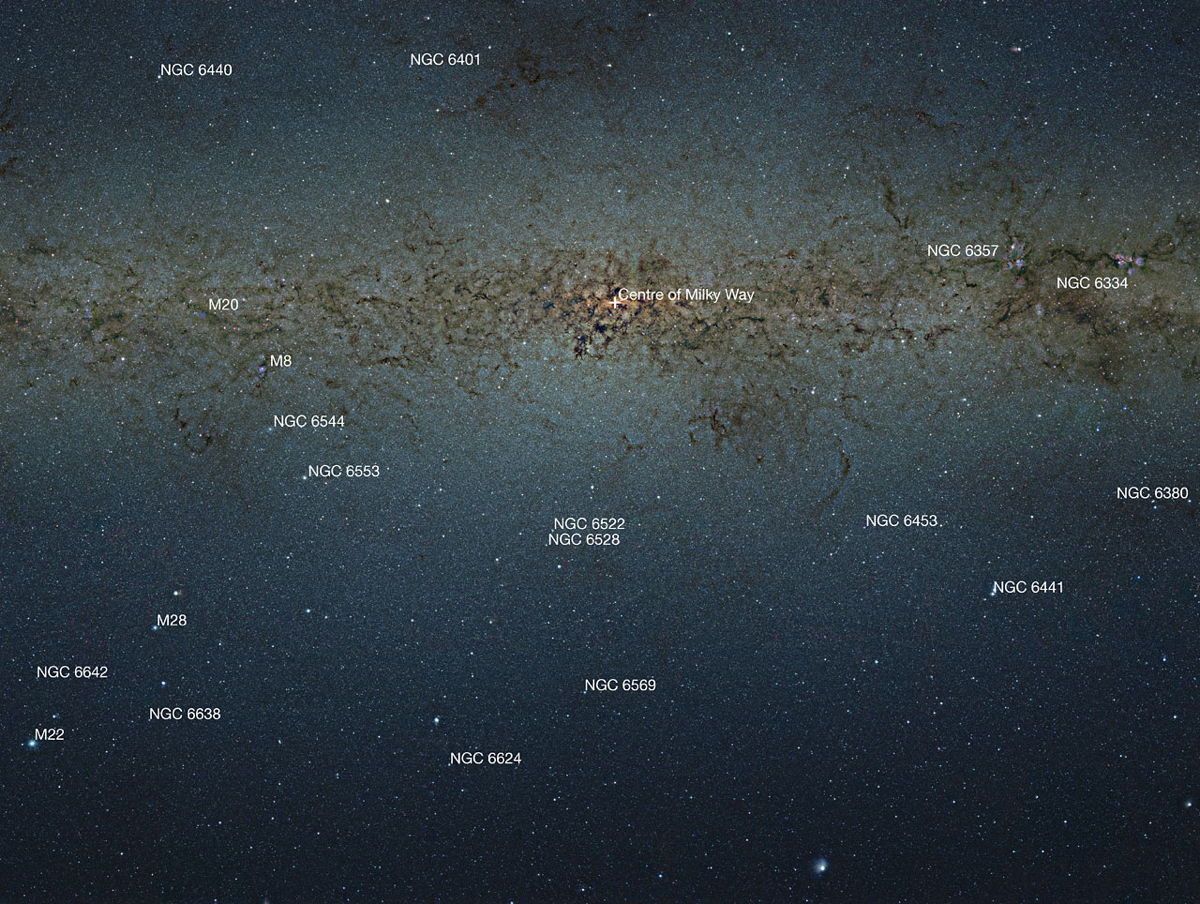
This infrared view of the central part of the Milky Way from the VVV VISTA survey has been labelled to show a selection of the many nebulae and clusters in this part of the sky. Messier 8 (the Lagoon Nebula), Messier 20 (the Trifid Nebula), NGC 6357 (the War and Peace Nebula) and NGC 6334 (the Cat's Paw Nebula) are all easily seen nebulae. The remaining labelled objects are all globular star clusters.
Join our Space Forums to keep talking space on the latest missions, night sky and more! And if you have a news tip, correction or comment, let us know at: community@space.com.

Space.com is the premier source of space exploration, innovation and astronomy news, chronicling (and celebrating) humanity's ongoing expansion across the final frontier. Originally founded in 1999, Space.com is, and always has been, the passion of writers and editors who are space fans and also trained journalists. Our current news team consists of Editor-in-Chief Tariq Malik; Editor Hanneke Weitering, Senior Space Writer Mike Wall; Senior Writer Meghan Bartels; Senior Writer Chelsea Gohd, Senior Writer Tereza Pultarova and Staff Writer Alexander Cox, focusing on e-commerce. Senior Producer Steve Spaleta oversees our space videos, with Diana Whitcroft as our Social Media Editor.










